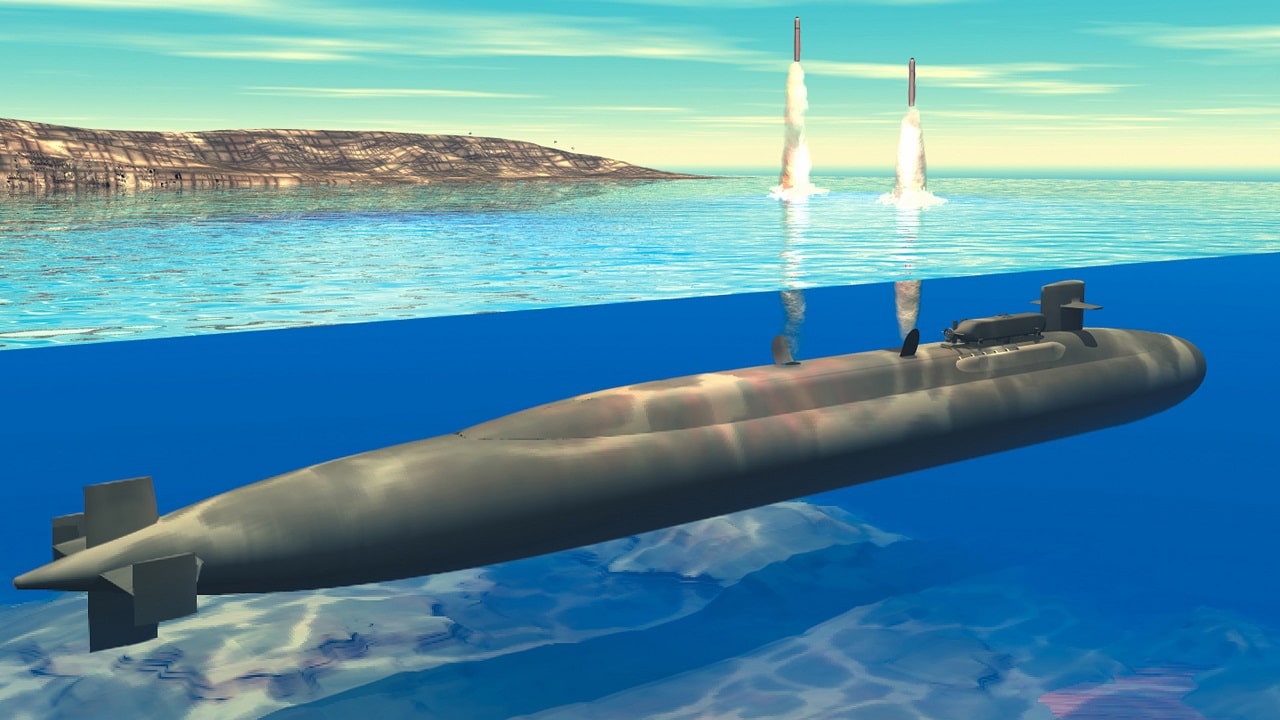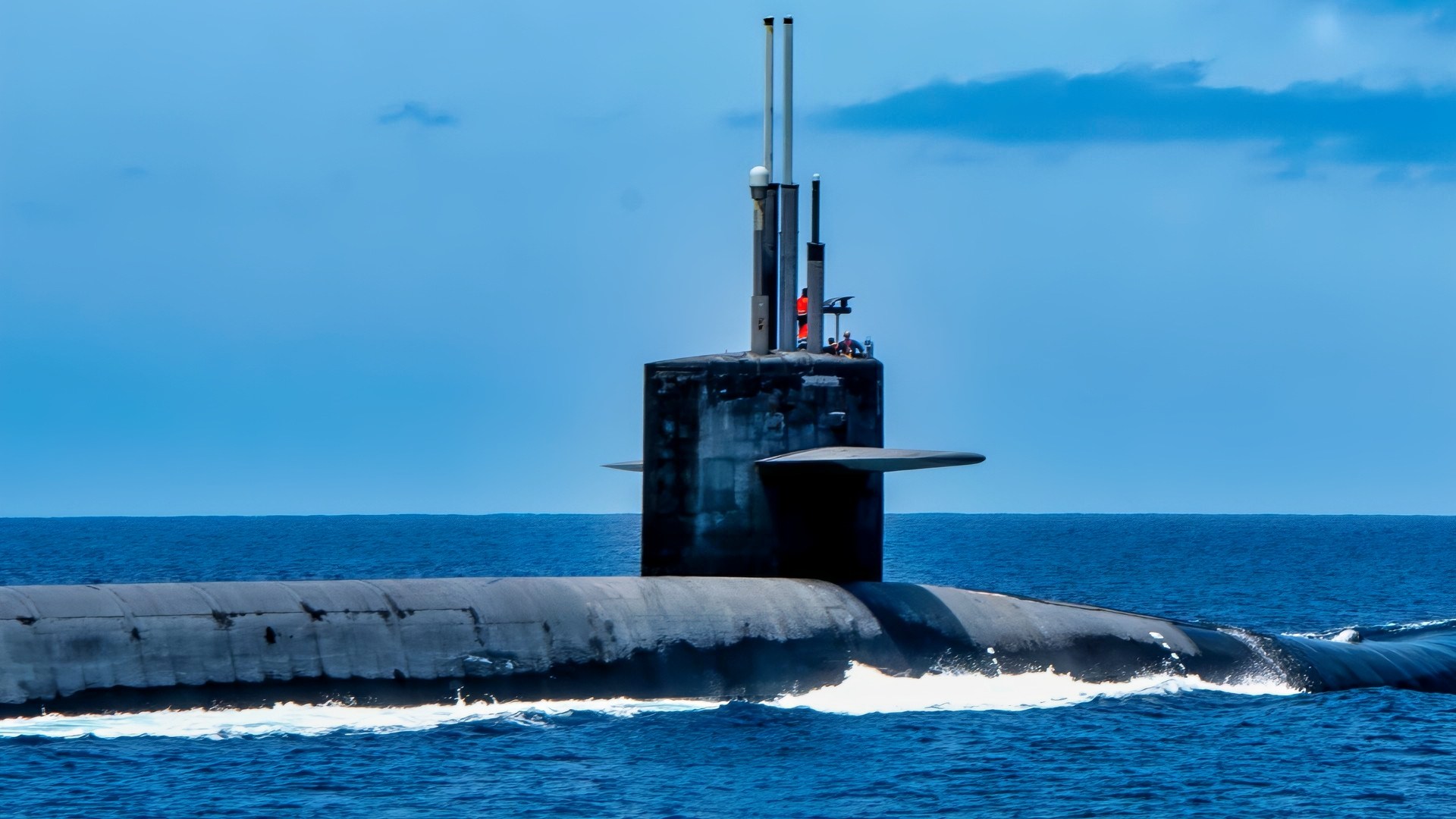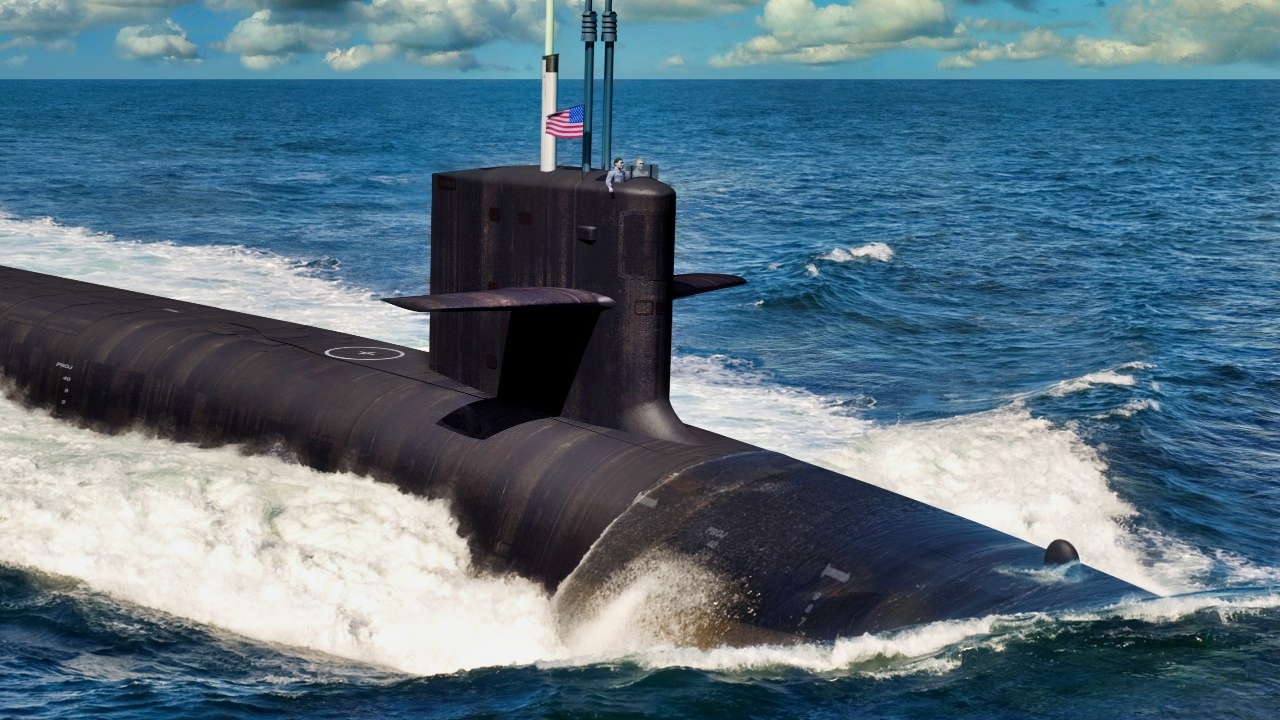Key Points and Summary – The U.S. Navy’s critical Columbia-class ballistic missile submarine program is facing significant delays and cost overruns.
-The lead boat, USS District of Columbia, is now expected 17 months behind schedule, arriving in 2029.

Ohio-class SSGN. Image Credit: Creative Commons.
-These setbacks, attributed to supply chain issues, manufacturing problems, and labor shortages, mirror delays plaguing other major Navy programs like the Ford-class carriers.
-Despite its advanced features—including a life-of-the-ship reactor and quiet electric drive—the delays and massive cost overruns (hundreds of millions for the lead sub) raise serious concerns about the Navy’s ability to replace the aging Ohio-class boomers on time.
Delay, Delay, Delay, Columbia-Class Submarines Join The Club
The Columbia-class submarine program is facing delays, with the lead boat estimated to be delivered around March 2029, about 17 months later than planned.
These delays are caused by a combination of issues, including supply chain problems, manufacturing difficulties with key components like steam turbines, and challenges related to labor shortages.
The Navy’s nuclear aircraft carriers are also facing delays as production on future Ford-class hulls are taking longer than anticipated, Navy officials told the Senate Armed Services Seapower Subcommittee back in April.
For the Columbia-class submarines, which are set to replace the Ohio-class boats in the U.S. nuclear triad, the lead ship, District of Columbia (SSBN-826), is now set to deliver in 2029, which is 12 to 18 months behind schedule, said Rear Adm. Todd Weeks, program executive officer for strategic submarines.
The following ships in the class, Wisconsin (SSBN-827) and Groton (SSBN-828), are set to follow roughly on schedule in 2032 and 2034, he said.
“We are taking action right now to accelerate and recover as much of the schedule as we possibly can,” Weeks said.

SOUDA BAY, Greece (Sept. 7, 2019) The Ohio-class cruise missile submarine USS Florida (SSGN 728) arrives in Souda Bay, Greece, for a scheduled port visit, Sept. 7, 2019. NSA Souda Bay is an operational ashore base that enables U.S., allied, and partner nation forces to be where they are needed and when they are needed to ensure security and stability in Europe, Africa, and Southwest Asia. (Photo by Joel Diller/Released)

Puget Sound Naval Shipyard, Wash. (Aug. 14, 2003) — Illustration of USS Ohio (SSGN 726) which is undergoing a conversion from a Ballistic Missile Submarine (SSBN) to a Guided Missile Submarine (SSGN) designation. Ohio has been out of service since Oct. 29, 2002 for conversion to SSGN at Puget Sound Naval Shipyard. Four Ohio-class strategic missile submarines, USS Ohio (SSBN 726), USS Michigan (SSBN 727) USS Florida (SSBN 728), and USS Georgia (SSBN 729) have been selected for transformation into a new platform, designated SSGN. The SSGNs will have the capability to support and launch up to 154 Tomahawk missiles, a significant increase in capacity compared to other platforms. The 22 missile tubes also will provide the capability to carry other payloads, such as unmanned underwater vehicles (UUVs), unmanned aerial vehicles (UAVs) and Special Forces equipment. This new platform will also have the capability to carry and support more than 66 Navy SEALs (Sea, Air and Land) and insert them clandestinely into potential conflict areas. U.S. Navy illustration. (RELEASED)
The $13 Billion Submarine Is Late and Over Budget
The Columbia-class submarines are facing delays of up to 17 months, but this is hardly an isolated issue as the Navy struggles to field a host of its next-generation systems in a timely fashion.
From submarines and destroyers to the F/A-XX fighter aircraft and aircraft carriers, numerous Navy projects have been burdened with delays due to labor shortages, supply problems, employee retention issues, and other roadblocks.
In April, Navy officials informed Congress that the Columbia-class, slated to replace the existing Ohio-class boats in America’s nuclear triad, is facing “critical path challenges” that threaten its intended delivery schedules.
These factors have drawn scrutiny from oversight bodies, including the Government Accountability Office (GAO).
A previous GAO report found that aside from the delays, the Navy is struggling to manage costs in the Columbia-class submarine program, with overruns reaching “six times higher than” the prime contractor’s estimates and “five times more than the Navy’s.”
“As a result, the government could be responsible for hundreds of millions in additional construction costs for the lead submarine,” GAO stated in a September 2024 report.

(July 29, 2025) – A U.S. Air Force A10C Thunderbolt II flies over the Ohio-class ballistic missile submarine USS Kentucky (SSBN 737) in the Pacific Ocean, July 29, 2025. The armed airborne escort exercise is designed to increase and demonstrate the Joint Force’s capability to protect strategic assets like Kentucky. Submarine Group (SUBGRU) 9, exercises administrative and operational control authority for assigned submarine commands and units in the Pacific Northwest providing oversight for shipboard training, personnel, supply and material readiness of submarines and their crews. SUBGRU-9 is also responsible for nuclear submarines undergoing conversion or overhaul at Puget Sound Naval Shipyard in Bremerton, Washington. (U.S. Navy Photo by Lt. Zachary Anderson)
Meet The Columbia-class Submarine
The Columbia-class submarine will be larger than the Ohio-class design in terms of submerged displacement, and therefore will be the largest submarine ever built by the United States.
The Navy has also planned the Columbia-class to be fitted with the most “up-to-date capabilities and stealth” to ensure they are survivable throughout their full 40-year life span.
Type: Ballistic missile submarine (SSBN)
Displacement: 20,810 long tons (submerged)
Length: 560 ft (171 m)
Beam: 43 ft (13 m)
Speed: 20+ knots
Diving Depth: 800+ feet
Installed power: Nuclear reactor
Propulsion: Turbo-electric drive, pump-jet
Range: Unlimited
Crew Complement: 155 (accommodation)
Sensors/processing systems: Enlarged version of the Virginia-class LAB sonar
Armament: 16 × Trident D5 Trident II can be loaded with up to eight Mk-5 RVs with 475-kt W88 warheads, up to twelve Mk-4A RVs with 90-kt W76-1 warheads, and up to twelve Mk-4A RVs with 5–7-kt W76-2 warheads.
The Columbia class boats are expected to have a 42-year service life (each submarine is expected to carry out 124 deterrent patrols during its service life)
Unlike the Ohio-class submarines, which require a mid-life nuclear refueling downtime, the Columbia-class has a life-of-the-ship nuclear fuel core that is sufficient to power the submarine for its entire expected service life.
Fewer Missile Tubes But Still Packing A Punch
The missile launch tubes are the same size as those of the Ohio class, with a diameter of 87 inches (2,200 mm) and a length sufficient to accommodate a D-5 Trident II missile.
The Columbia-class will have 16 missile launch tubes instead of 24 on the Ohio-class submarines.
The Center for Strategic and International Studies stated, “Its payload carries a Post-Boost Vehicle (PBV) which can carry up to 12 Reentry Vehicles (RVs), though New START limits the number to eight. These RVs can be either the Mk 4 with a W76 100 kT yield warhead or the Mk 5, which has a W88 475 kT yield warhead.”
Quieter Electric Motors
In addition to this armament feature, the Columbia submarines will also be equipped with X-shaped Stern Control Surfaces (hydroplanes), which will increase maneuverability, allow for faster, safer speeds at lower depths, reduced noise signature, and more.
The Columbia-class submarine will use a fully electric drive propulsion system, which is a significant departure from previous submarine designs. Manufactured by Leonardo DRS, this system uses large, advanced permanent magnet main propulsion motors powered by the submarine’s integrated electric power system to turn the propulsor shaft, eliminating the need for complex mechanical gears.
The Columbia-class submarines will be the most advanced missile submarines (SSBN) once they are completed. But the delays, which are endemic in the shipbuilding industry, are costing the taxpayer hundreds of millions of dollars.
There is no doubt that the Columbia-class, like other large-ticket items, will be well worth the wait once they are finally fielded.
However, the government must find a way to hold these contractors accountable.
About the Author: Steve Balestrieri
Steve Balestrieri is a National Security Columnist. He served as a US Army Special Forces NCO and Warrant Officer. In addition to writing on defense, he covers the NFL for PatsFans.com and is a member of the Pro Football Writers of America (PFWA). His work was regularly featured in many military publications.
More Military
Montana-Class: The U.S. Navy’s Superbattleships That Never Sailed
The F-35 Stealth Fighter Feels Like a Black Hole of Trouble
Russia’s Admiral Nakhimov Kirov-Class Battlecruiser Has a Warning for the Russian Navy
China’s Yuan-Class AIP Stealth Submarine Has A Warning for the U.S. Navy
Mach 6 SR-72 Darkstar Could Soon Be the ‘Fastest Plane on Earth’










